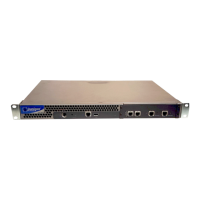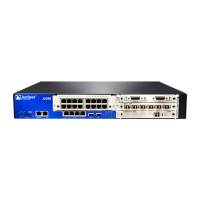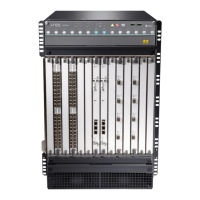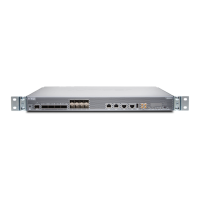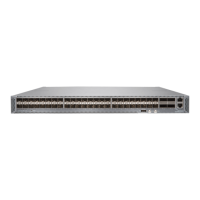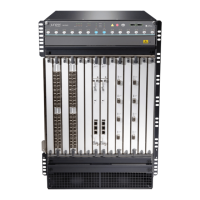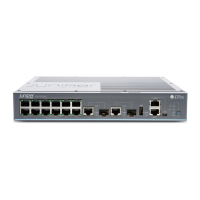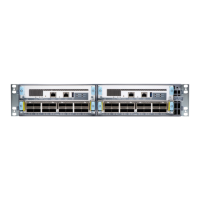The following example translates incoming trunk packets from VLAN identifier 200 to
500 and 201 to 501 (other valid VLAN identifiers are not affected):
[edit interfaces ge-1/0/1]
unit 0 {
... # Other logical interface statements
family bridge {
interface-mode trunk # Translation is only for trunks
vlan-id-list [ 100 500–600 ];
vlan-rewrite {
translate 200 500;
translate 201 501;
}
... # Other bridge statements
}
}
NOTE: This example also translates frame VLANs from 500 to 200 and 501
to 201 on egress.
Related
Documentation
Ethernet Networking•
• Bulk Configuration of VLANs and Bridge Domains on page 59
• Example: Configuring Multiple Bridge Domains with a VLAN ID List on page 60
Example: Configuring Multiple Bridge Domains with a VLAN ID List
To configure multiple bridge domains with one statement, include the vlan-id-list
statement at the [edit bridge-domains] hierarchy level.
The following example automatically configures 4093 bridge domains named sales-vlan-2
through sales-vlan-4094:
[edit]
bridge-domains {
sales { # This is the prefix
vlan-id-list [ 2–4096 ]; # These are the numbers
}
}
You can configure these bridge domains in a virtual switch routing instance. However, if
a VLAN identifier is already part of a VLAN identifier list in a bridge domain under a routing
instance, then you cannot configure an explicit bridge domain with that VLAN identifier.
In other words. there can be no overlap between a VLAN identifier list and another VLAN
identifier configuration.
The following example removes the VLAN identifier 5 from the original VLAN list
(vlan-id-list [ 1–10 ]) and configures the bridge domain explicitly:
[edit routing-instance rtg-inst-10]
instance-type virtual-switch;
interface ge-7/3/0.0;
Copyright © 2012, Juniper Networks, Inc.60
Junos OS 12.1 MX Series 3D Universal Edge Routers Solutions Guide
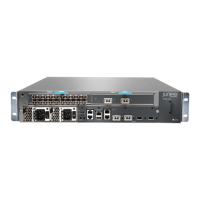
